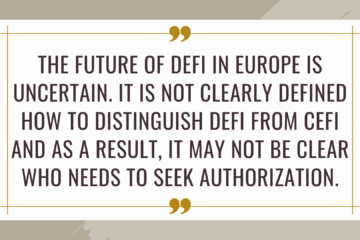10 Key Things You Need to Know About EU 4th AML Directive
1. It’s good.
It’s mostly good news. The majority of its new requirements were applied by the industry participants log ago, and it gives much more flexibility to obliged parties in terms of customer due diligence and risk categorization.
2. Timing
It’s original implementation was planned by June 26th 2017, but in July 2016 European Commission issued proposed amendments to the Directive, strengthening a few requirements surrounding prepaid cards and verification of beneficial owners, and requesting national regulators to transpose the requirements into the national laws by January 2017. Which is extremely tight deadline, if you think about leisurely parliamentary legislative process in the majority of countries. It’s quite possible that that in many countries some grace (or silent) interim period will be granted, to give obliged parties a little more time to get compliant.
3. Beneficial Owners
Beneficial Owners (“BO”). We should not worry about the central register of beneficial owners just yet (because it does not exist). The key question is if it’s going to be mandatory to use it or not. % ownership requirement for BO verification is reduced from 25% to 10% in case, if the entity is a passive non-financial entity (you need it for FATCA anyway).
So, what is changing?
4. Person-to-person transfers
Senders and receivers of person-to-person transactions (that are not payments for goods and services) above 1000 euro must be verified (or, as a minimum, a party that is in the EU and a customer of the EU financial institution). This requirement is also stipulated by the new EU Funds Transfer Regulation.
PEPs.
5. Domestic PEPs
It is mandatory now to identify domestic PEPs among your customers in addition to foreign and international PEPs, obtain senior management approval for these business relationships and conduct ongoing monitoring.
6. No 2500 EUR limit
2500 euro transactional verification threshold for e-money activities is gone. Instead, each obliged party must conduct a risk assessment and design its own due diligence program, based on the risk category of customers.
7. Verification thresholds for customers of gambling operations is introduced at 2,000 euro.
8. No automatic exemption from EDD for licensed financial institutions, publicly listed companies, state entities and international organizations (though it is still possible to apply the exemption if they are low risk).
9. Cash payment verification threshold is lowered from 15,000 euro to 10,000 euro.
10. Prepaid cards.
Stringent verification requirements for holders of prepaid cards – issuers, operators (and, by extension, most likely payments institutions processing) these cards must verify all card holders unless the card monthly limit and/or maximum balance is 150 euro (or 50 euro, if there is a withdrawal or redeem option).
P.S. If you would like more information about digital KYC, onboarding requirements, AML tools and field validation, feel free to grab your FREE pdf Checklist by following the link below.
Want to learn more about digital KYC? – download my FREE Checklist NOW



 ) about the “Travel Rule” for blockchain transfers and what might be the first simplified implementation of it for a FInTech startup that’s getting very confused by various complex
) about the “Travel Rule” for blockchain transfers and what might be the first simplified implementation of it for a FInTech startup that’s getting very confused by various complex